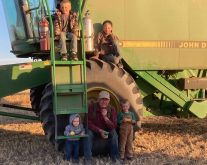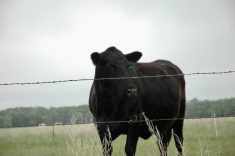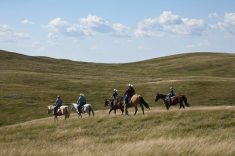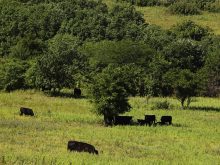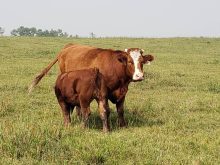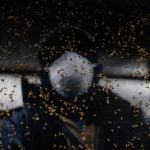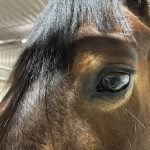First-calved beef heifers are bigger animals than they used to be.
Better genetics and nutrition are two good reasons. Yet, these brand-new mothers still require special attention after calving, despite some producers treating them like seasoned mature cows.
I often recommend that a good walk be taken among the main cow herd or segregated groups of first-calved heifers (now young cows). Conduct a proper body condition score (BCS) of each young animal, which determines their nutritional status. From there, select the particular feeding program on which you want to take them, once the heifers are on pasture in order to get rebred with their second calf.
Read Also

Gentle treatments for pain in the neck
Heading toward year-end, people unknowingly tense up against the cold and busyness, causing neck pain that can often be treated with appropriate support and gentle mobility, athletic therapist Kathlyn Hossack says.
A good BCS of each young cow on the day of calving is a good starting point that will dictate the success of such upcoming reproductive performance. That’s because an optimum BCS of 5 to 6 on a scale of 0 to 9 is an indication of her current nutritional status, which is the single most important factor that controls postpartum interval, milk production, estrus strength, services per conception and, ultimately, successful rebreeding.
In light of research-proven facts, I recently spent a couple of hours with a herd manager of a 350-head cow-calf operation. We completed a body assessment of about 60 calved-out replacement heifers. The premise was:
- Starting calving date was March 1, 2025.
- First-calf replacement heifers were bred three weeks ahead of the main cowherd – allowing 20–30 days of extra post-partum interval.
- All heifers were fed an overwintered diet of 15 kg barley silage, two kg grass hay, 0.5 kg canola meal and four oz. of a well-balanced fortified mineral-vitamin premix. All barley grain was removed a couple of weeks ago.
- Replacement heifers were segregated from the main herd and housed along with cull cows due to a lack of facilities.
- Creep feeders were placed in the pen and filled with a 16 per cent texturized oat-corn ration.
- Bulls are released on pasture during mid-May for a 60-day breeding season.
Most of these calved replacement heifers are well-framed animals that scored the desired 5 to 6, which I believe was directly responsible for only one or two assisted births from the present calvings.
These young mothers were also nursing well with two- to three-week-old calves that had great vitality. Only two replacement heifers were poor doers (thin body condition, due to other factors) and were soon to be culled.
Since there was a good amount of rainfall in the fall, in combination with early spring snows, the manager expects most pastures to be in good shape by the time the cow herd is released. The plan is that his first-parity cows (nursing a new calf) will be moved onto green pastures broken up only a couple of years ago. The high quality of these tamed pastures is expected to match their high energy and protein requirements for lactation, support of good body growth and retaining body condition in order to trigger at least one active estrus before the breeding season.
The manager also routinely feeds a loose mineral on pasture to the main cowherd as well as to all first-calved beef heifers. It has been his experience that a well-formulated mineral should be fed at three to four ounces per day in order to build up the mineral/vitamin status of every cow, which promotes active rebreeding and conception.
His personal choice is a “breeder-type” mineral with 18 per cent calcium and nine per cent phosphorus plus fortified levels of “chelated” copper, zinc, manganese and selenium as well as higher levels of vitamins A, D and E. He has never had much of a problem with grass tetany over the years, so he limits the magnesium to about three per cent, which meets those respective requirements.
Given that good pasture nutrition is in place, his only real concern is a bout of foot rot that hits the same young cow group (with nursing calves). When it happens, about every other year, it starts with one or two cows and spreads to about a third of the other grazers. Luckily, the most visible cases are caught in the early stages and treated with antibiotics.
Beyond that concern, it’s a matter of providing good nutrition and management to a young set of mothers that really started at the beginning of winter and carried on to the calving season. It means carrying on this special attention from calving and right through the breeding season on pasture.
As a result of all these efforts I look forward to successful confirmation of a second pregnancy, 30 days hence.




